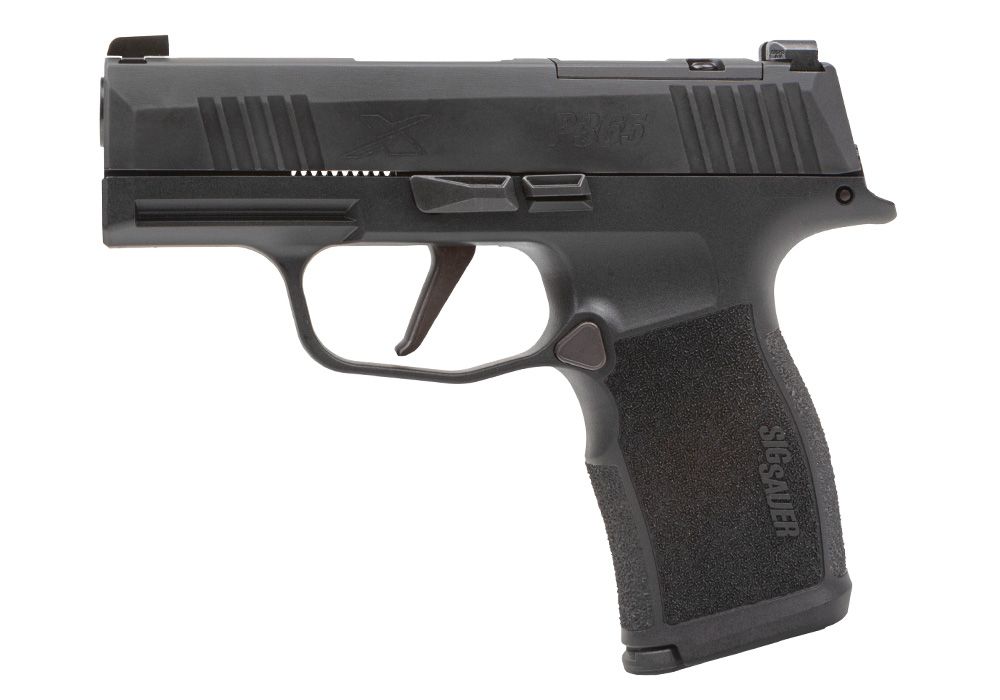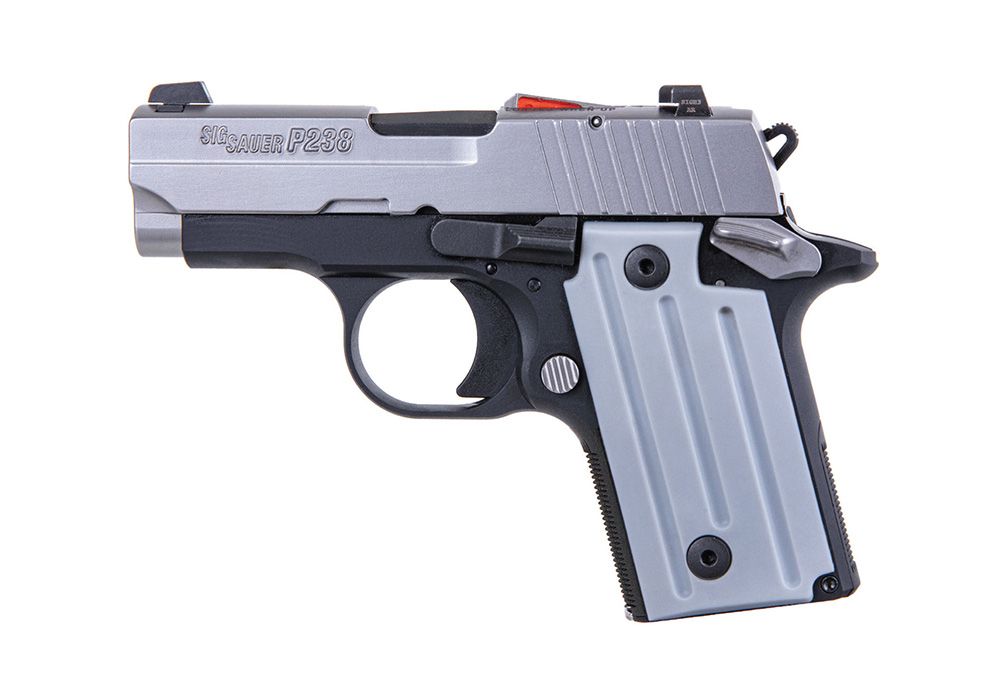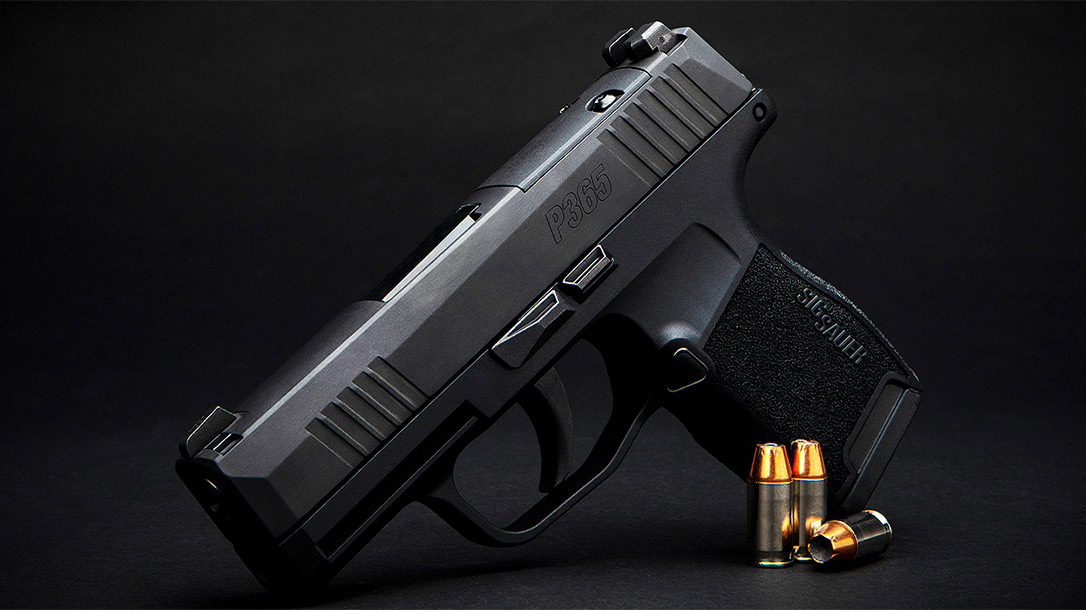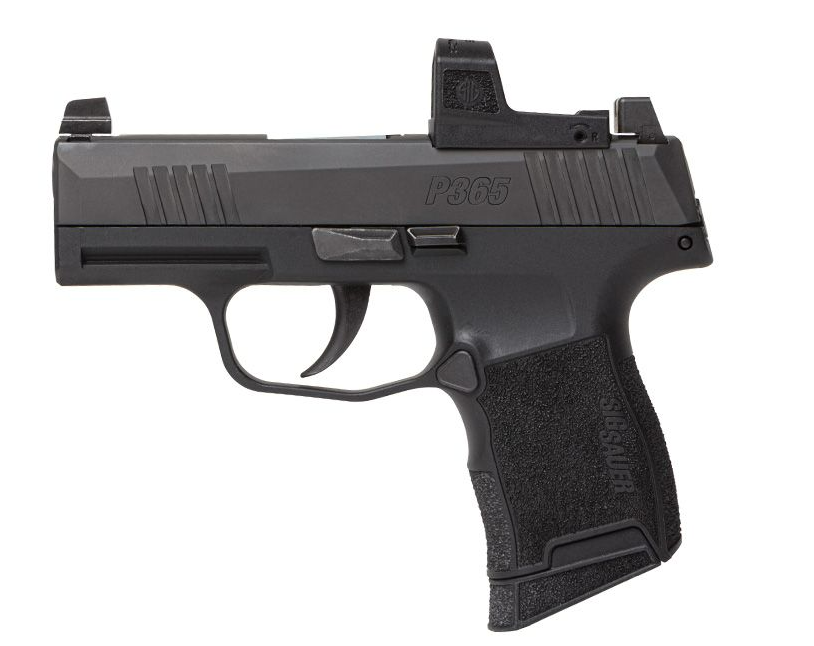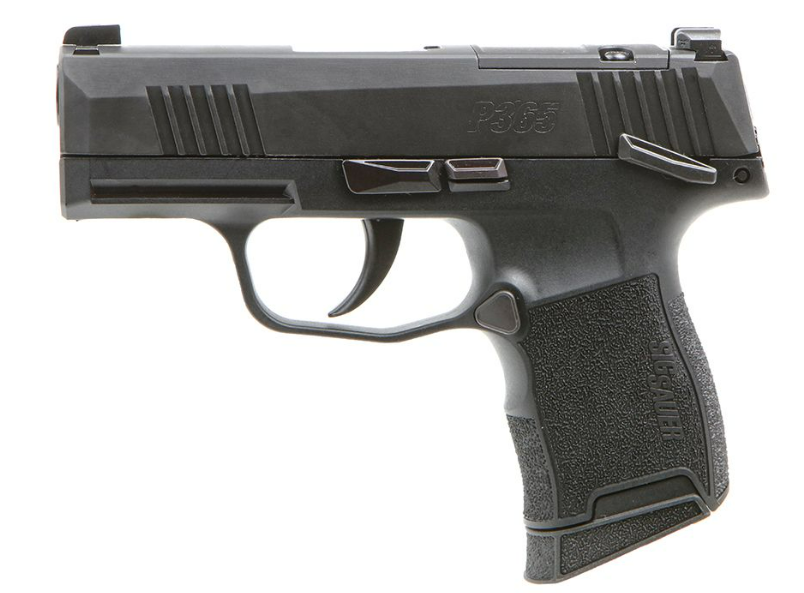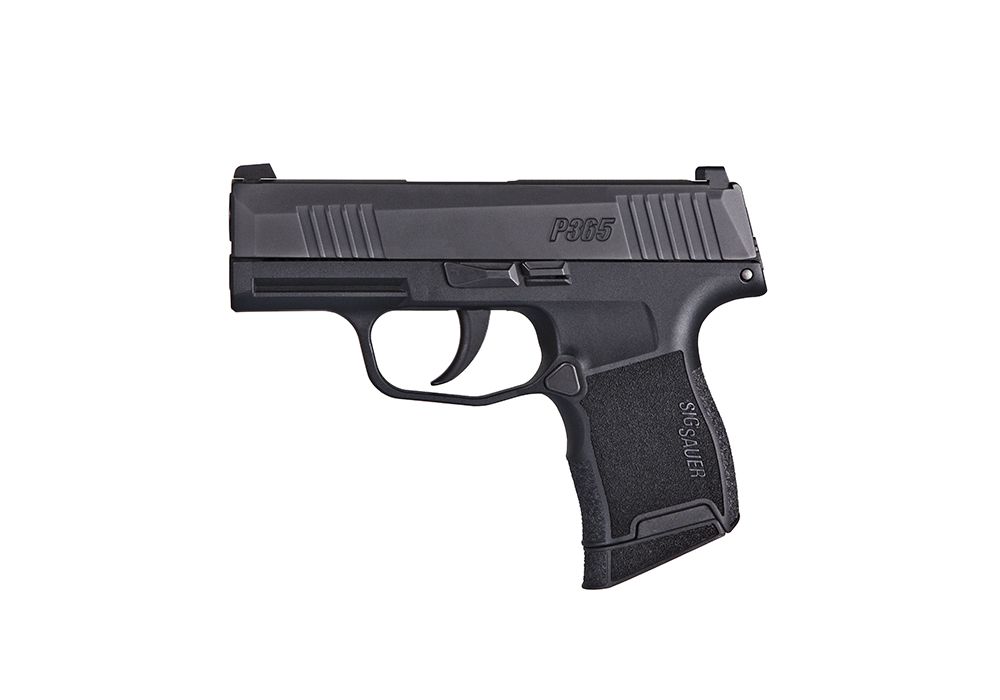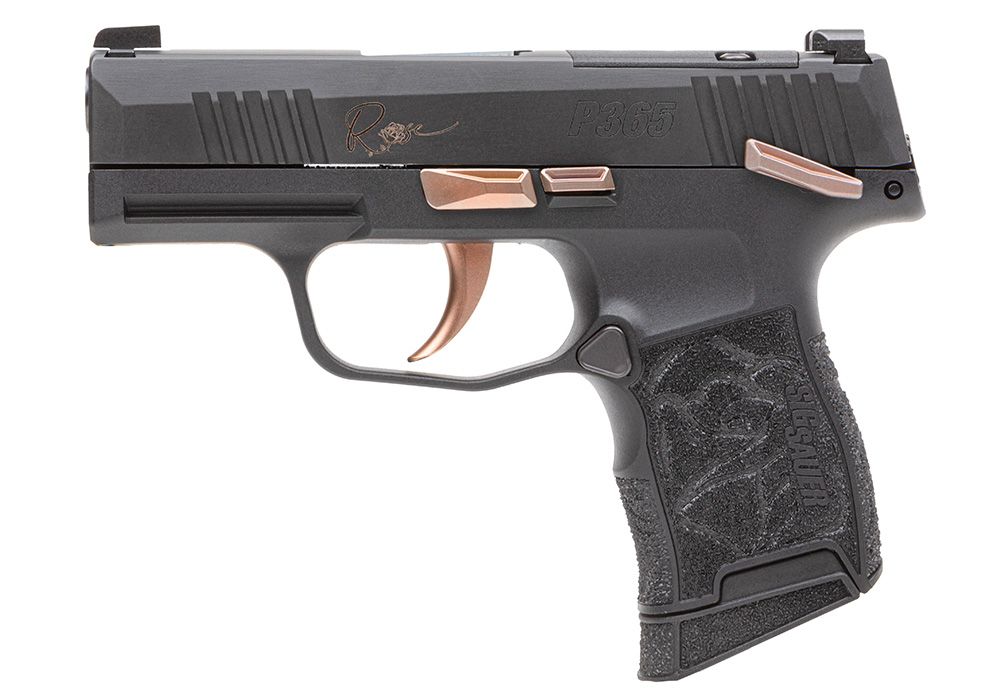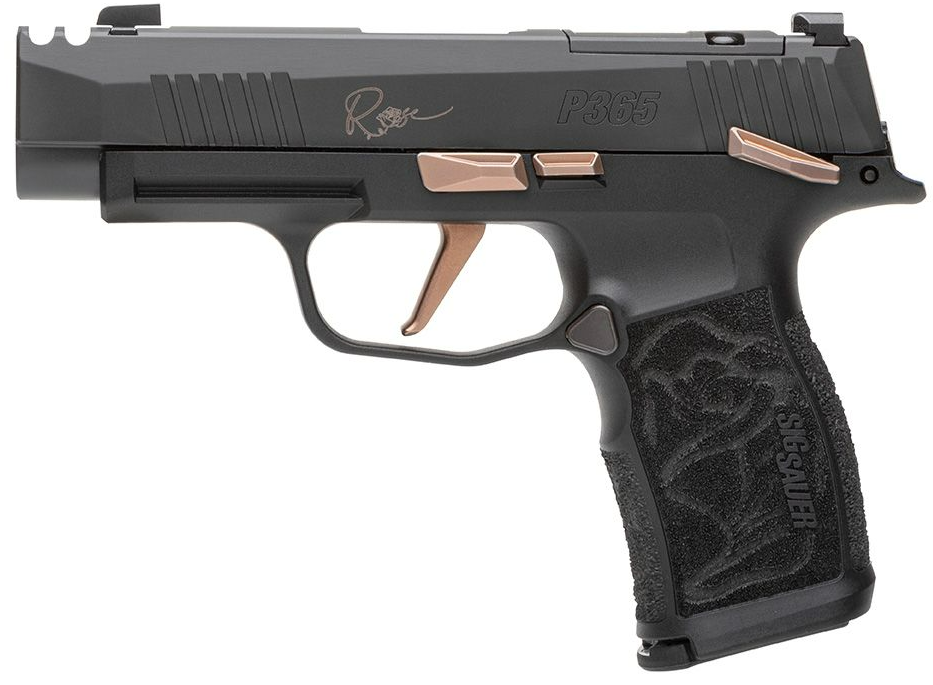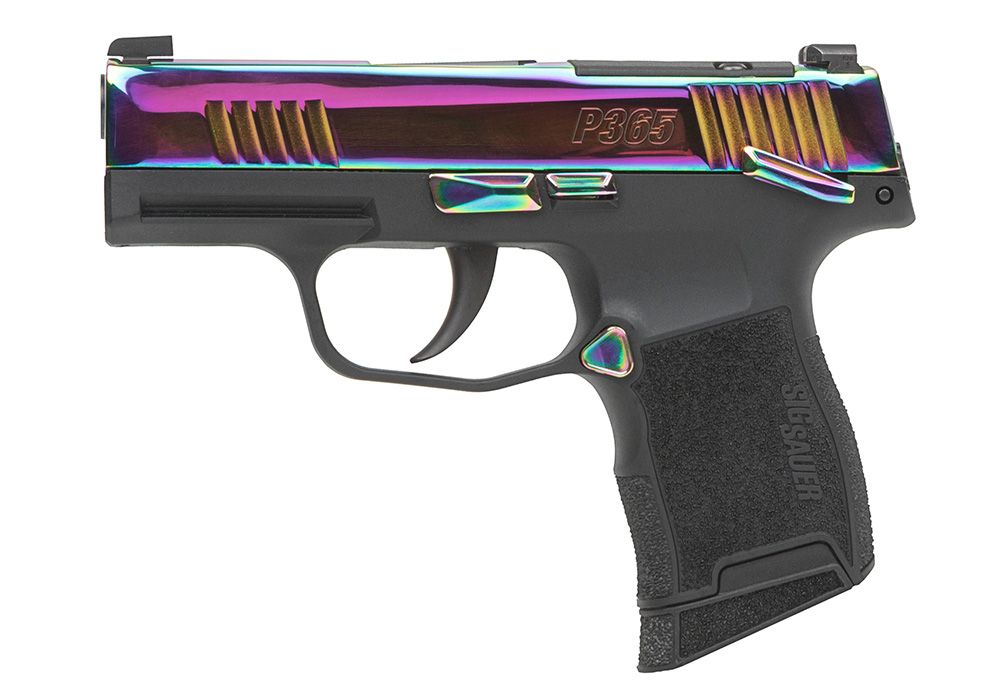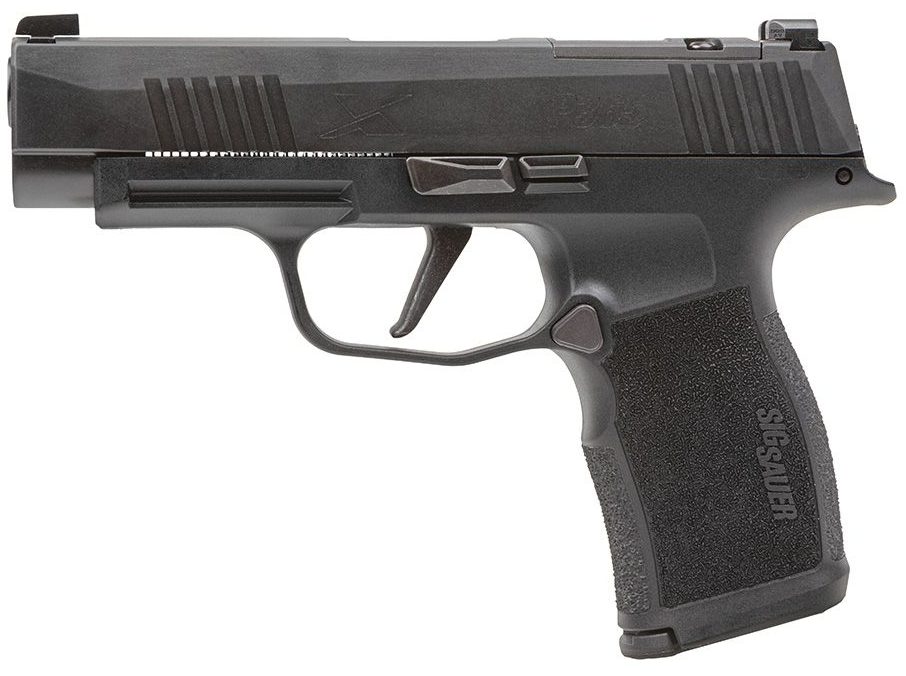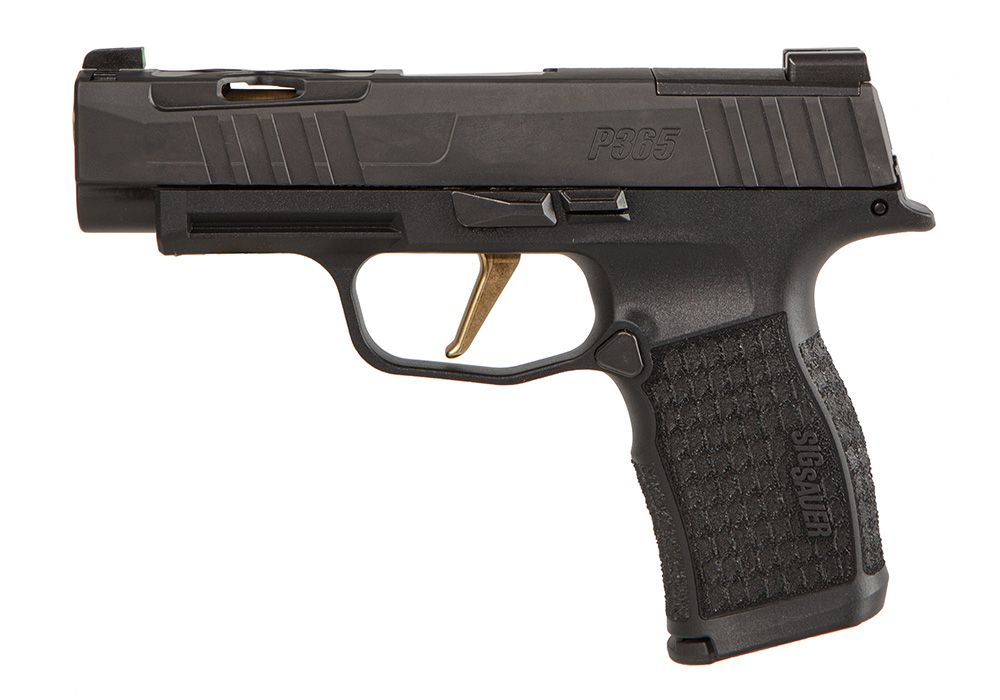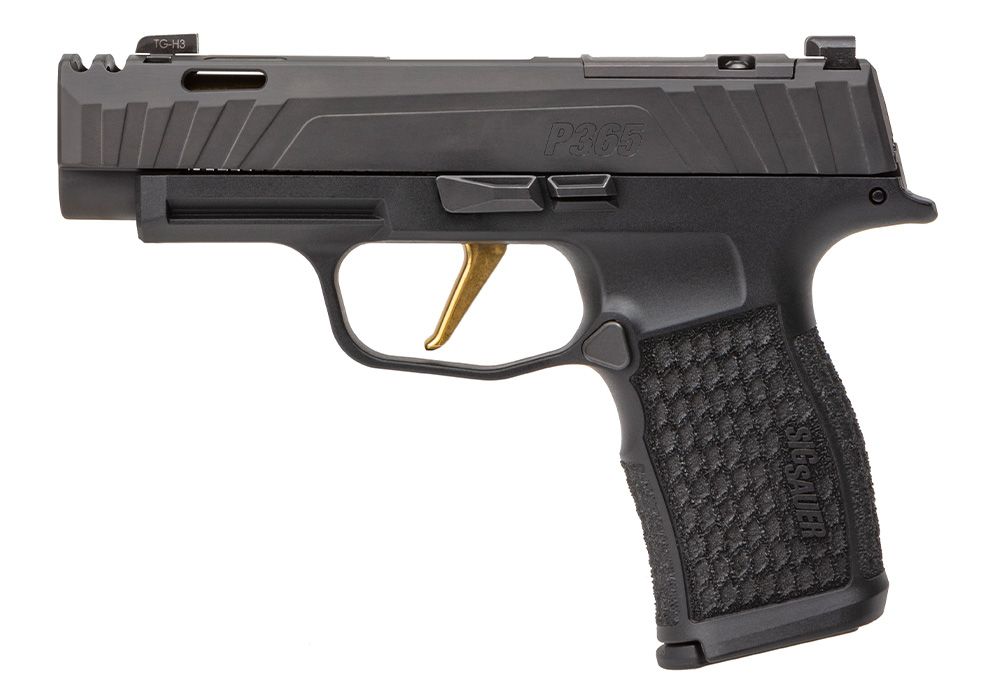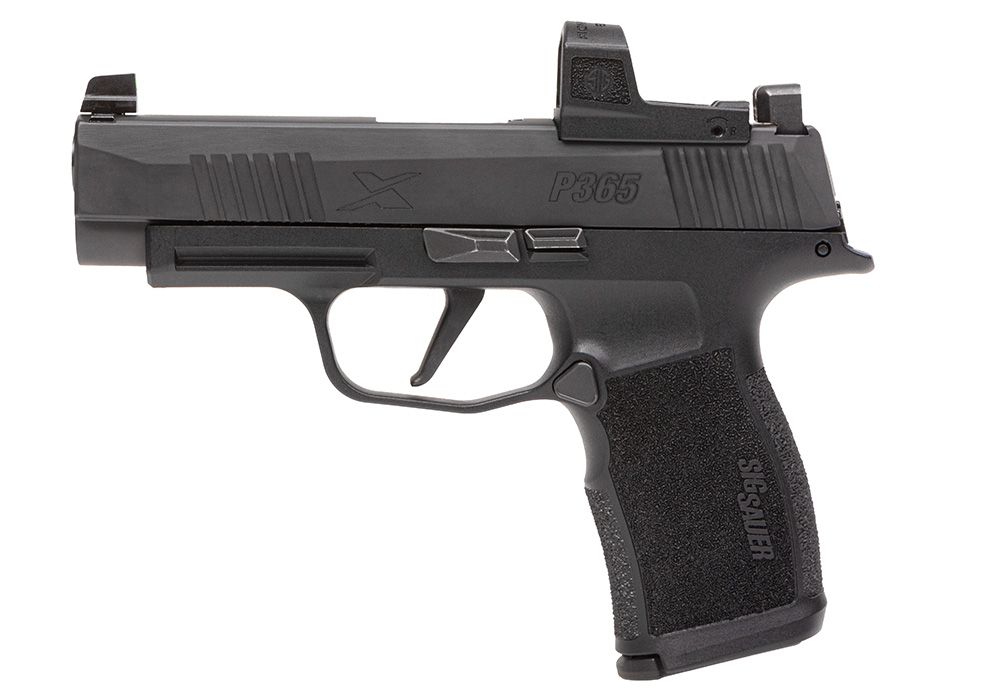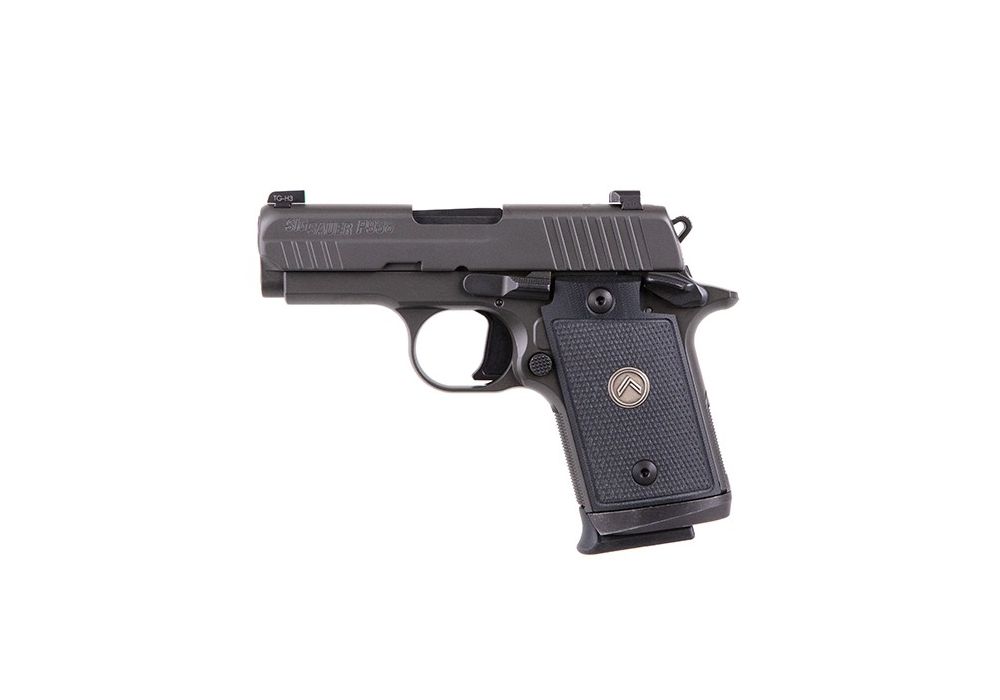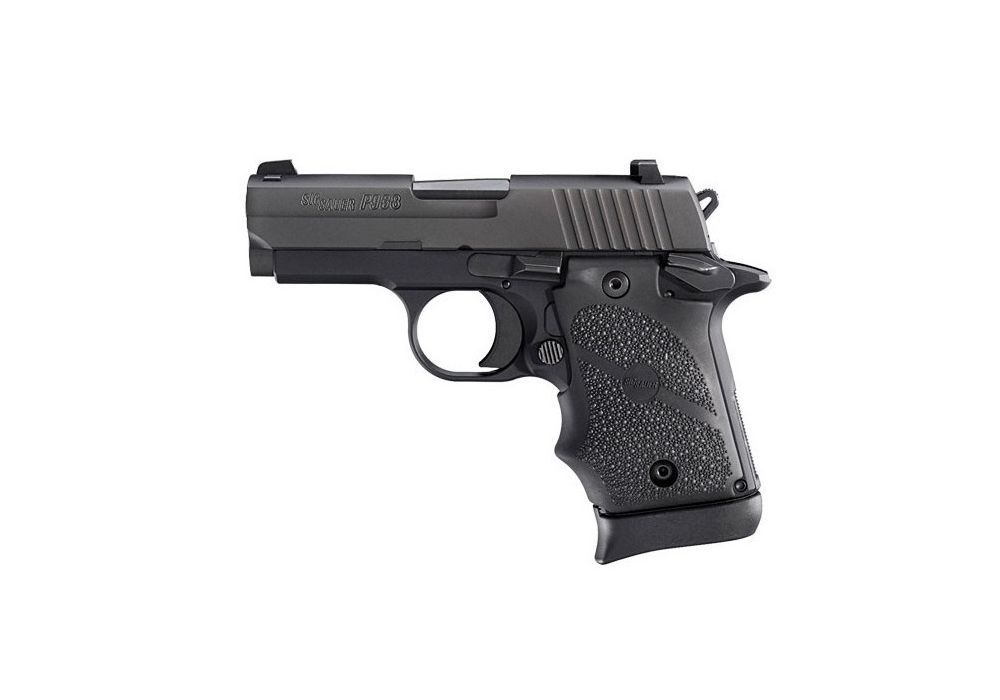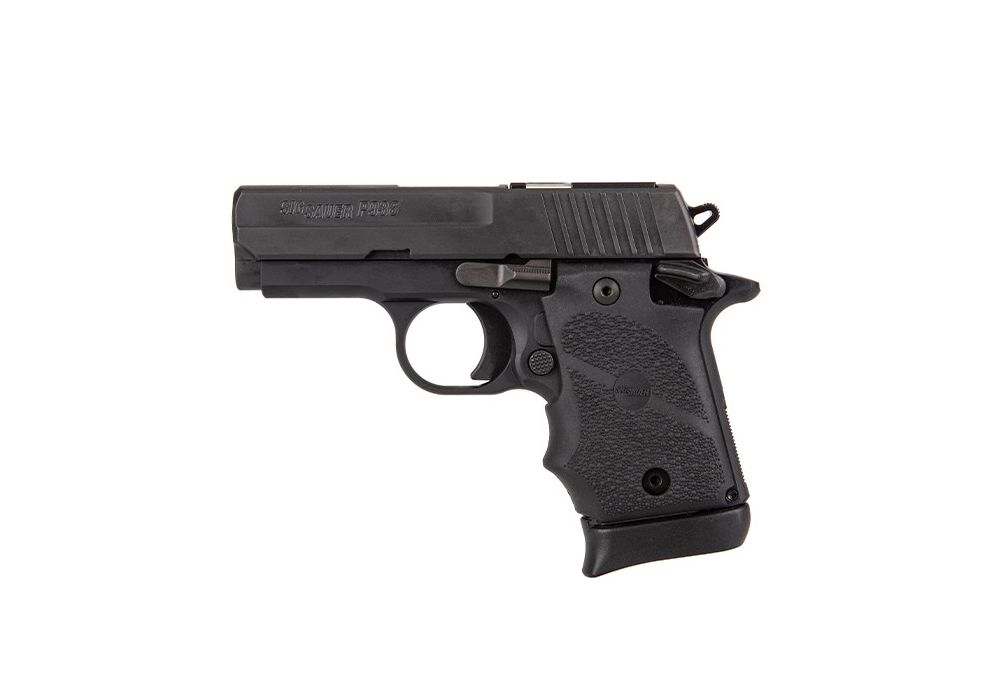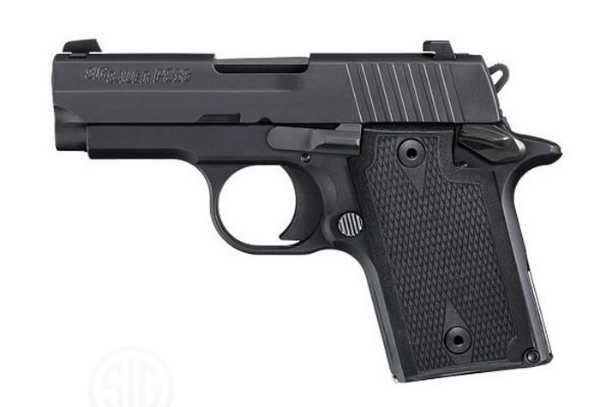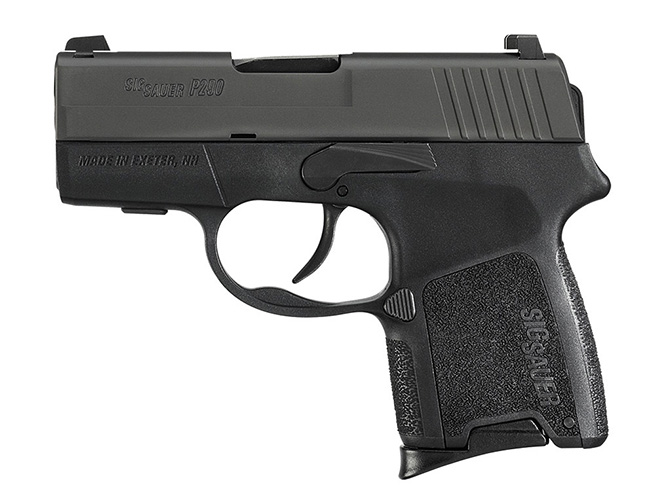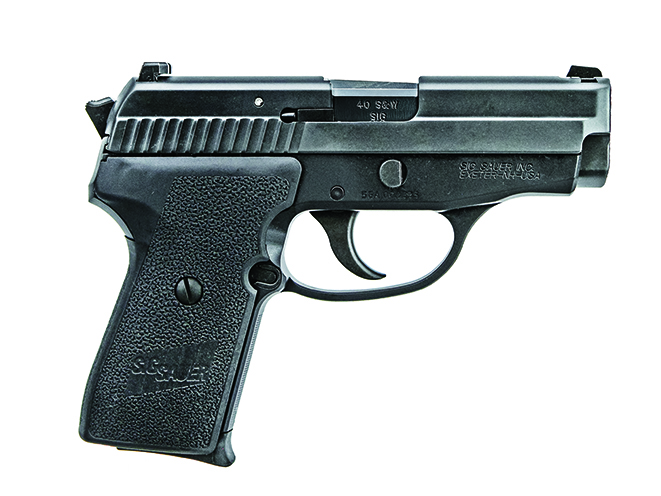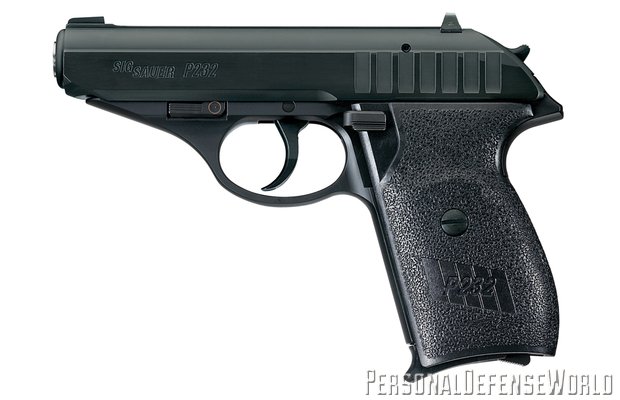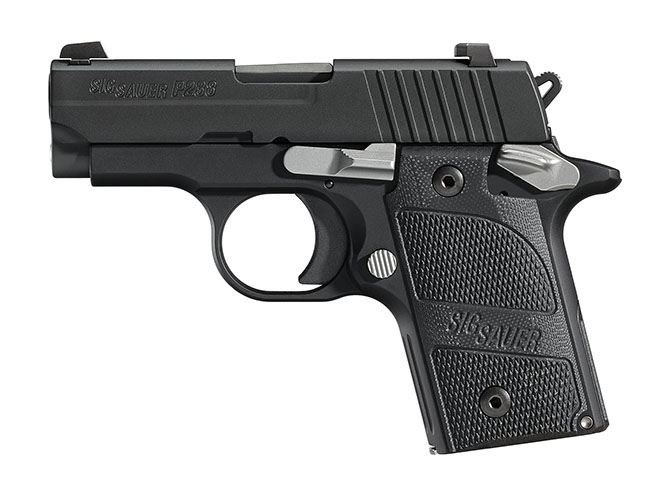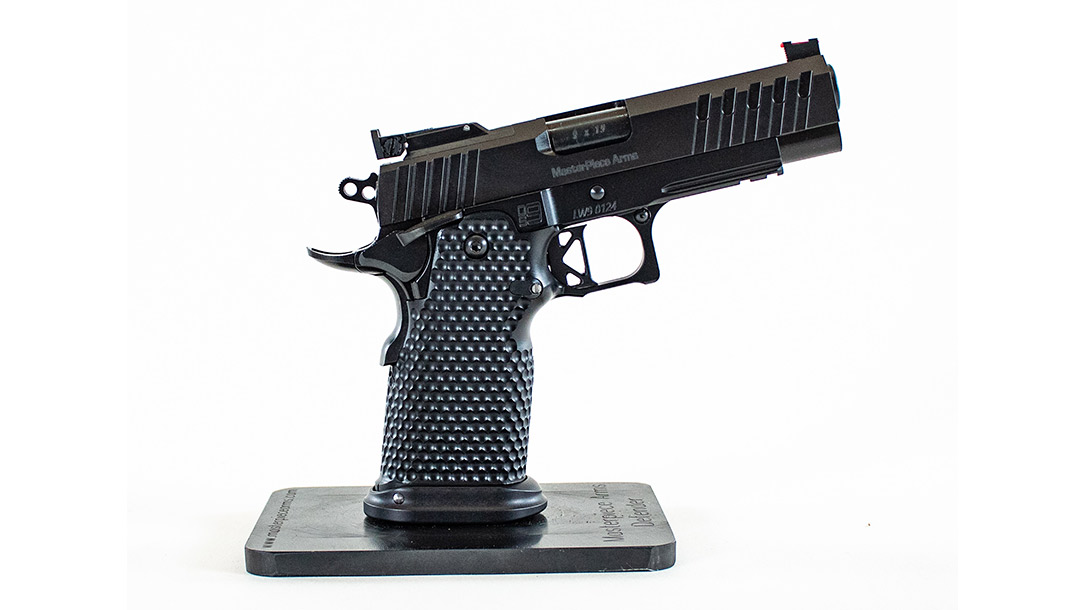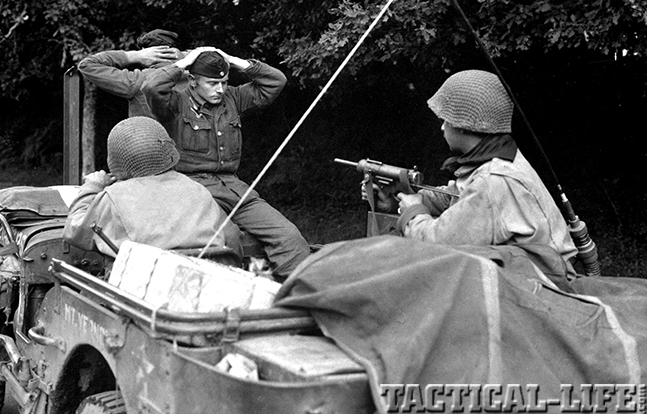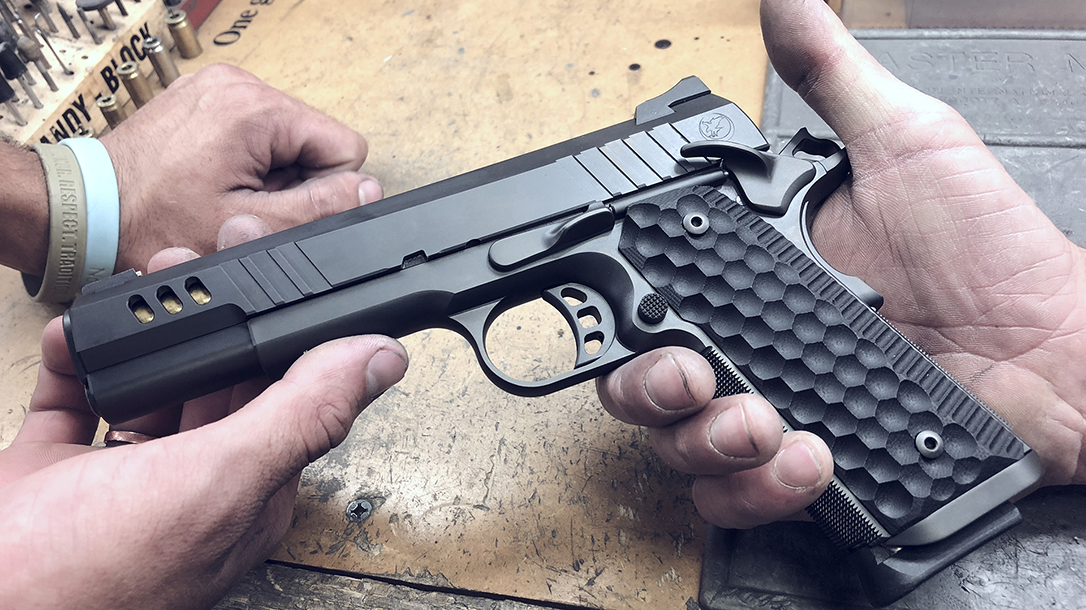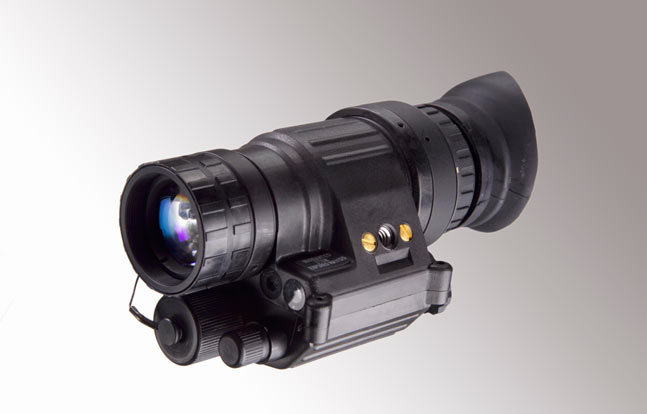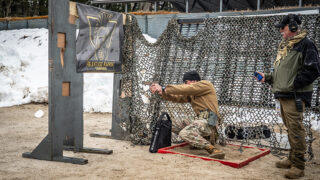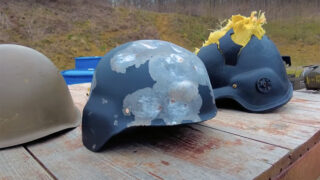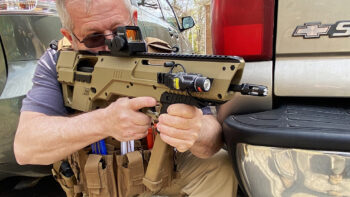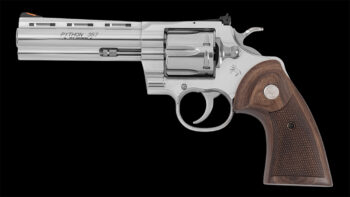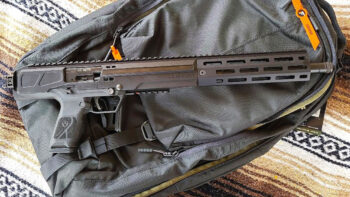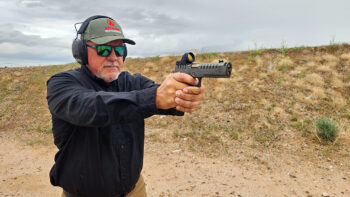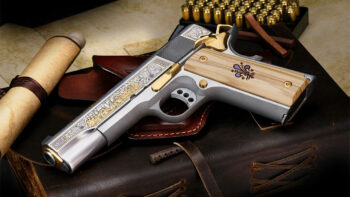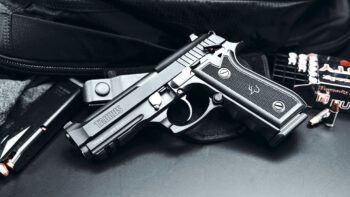After years of working for a division of a major firearms manufacturer that has supplied the U.S. military with 9mm pistols, I’m familiar with military and law enforcement sidearms. I frequently ask the opinions of law enforcement officers about the merits of various LE duty handguns. The majority leans toward a SIG as the top of its class. That same reputation for quality and dependability carries forward into SIG pocket pistols as well.
P238 Nitron
The SIG P238 Nitron maintains the look and function of its now-discontinued predecessor. The all-metal SIG P238 Nitron boasts an overall length of 5.5 inches and a height of 3.96 inches. At just under a pound, the SIG P238 Nitron is a concealed-carry dream. Owners have the option for contrast sights or SIGLITE Night Sights are removable and adjustable for windage. Both the sear and trigger return springs have been redesigned to prevent spring override of the ejector.
SIG P365-380
Meanwhile, the optics-ready SIG P365-380 offers all of the much-lauded features of its 9mm peers. What sets it apart is that it has less recoil and simplified handling. For shooters with small hands, this is the perfect pistol for concealed carry. The SIG P365-380 is also available in a stunning robin’s egg blue. In the lineup of SIG pocket pistols, this is one that works well for any shooter.
SIG P365-380 ROMEOZero Elite
Another variant is the P365-380 ROMEOZero Elite. It too has all of the excellent features that the P365 is known for. What sets it apart is a slide that includes an optic mounting cut compatible with the ROMEOZero Elite or any optic with the same design.
P365 Optics Ready
If you appreciate what the SIG P365 has to offer, then you’ll love its optics-ready counterpart. Lightweight and easy to conceal, the Optics Ready version is chambered in 9mm and is rated for +P ammunition for added power. Included are the standard XRAY3 Day/Night sights for quick target acquisition.
P365 SAS
What sets the P365 SAS from other 365 variants is that it was designed to create smoother draws and quicker sight acquisition. SAS (SIG Anti Snag) dictates that the controls are flat to yield smooth sides all around. With the FT Bullseye sight embedded into the slide, the front sight won’t snag upon drawing. The fiber optic day sights and low-light tritium sights give shooters lightning-fast target engagement.
P365 Nitron Micro-Compact
What sets the Nitron Micro-Compact apart from its peers is that it marries everyday carry size with 10+1 full-size capacity. The Nitron Micro-Compact is both lightweight and easy to conceal and chambered in 9mm and is rated for +P ammunition. The standard XRAY3 Day/Night sights allow for rapid target acquisition and engagement in different light settings.
P365-.380 ROSE/P365-XL COMP ROSE
The most unique – and most feminine – is the P365 ROSE. It was developed in collaboration with World Champion Lena Miculek. This is more than a handgun, it’s an entry into a lifestyle. The ROSE P365 kit includes a special edition pistol, a custom Vaultek lockable storage case, access to a complete step-by-step ROSE video training series that allows new shooters to learn at their own pace, along with connection to the supportive ROSE online community.
The P365 is nothing short of eye-catching with its stylized optic-ready slide, matte rose gold-colored controls, and laser-engraved grip. If there is a new female shooter in your life, consider gifting them this kit.
Meanwhile, the 9mm P365-XL COMP ROSE Variant sports a compensated slide to help dampen recoil with heftier ammunition. If you know a new female shooter, introduce her to the ROSE SIG pocket pistols first.
P365-380 Rainbow
If rose gold isn’t your jam, consider the P365-380 Rainbow. The Rainbow features a gloss rainbow PVD finished slide, magazine catch, manual safety, slide catch, and takedown lever. The Rainbow combines both style and substance with a slide that includes a removable sight plate. It is compatible with all ROMEOZero Optics as well as the RMS-C footprint. What’s more, the Rainbow also comes with XRAY3 Day/Night sights for fast and reliable target acquisition. This SIG pocket pistol manages to be a winning combination of power and eye-catching flair.
P365X
At a forgiving weight of only 17.8 ounces, the P365X is an excellent lightweight choice for those that eschew any bulk when it comes to concealed carry. Only 1.1 inches thick, it’s a perfectly slim EDC option. The “X” in this P365 variant comes from its XSERIES flat trigger that offers a 90-degree break for a clean-cut trigger pull.
Like many of the SIG P365 variants, it includes XRAY3 Day/Night sights and an optic cut on the slide. Shooters need to be mindful that the rear sight is mounted to the optic plate. This means that co-witnessing is not an option with an optic installed.
P365X ROMEOZero Elite
The P365X ROMEOZero Elite maintains the same features as the P365X. The only difference is that it includes a ROMEOZero Elite 3 MOA optic installed and ready for the range. So if reliable optics are what you’re craving in an EDC 9mm pistol, the P365X ROMEOZero Elite is an excellent choice.
P365 XL
For those in need of a larger grip module and versatility, we’d like to introduce you to the P365 XL. The rear sight on the P365 XL slide can be swapped out to attach the red-dot optics of your choosing and the slides and frames of the variants are interchangeable. If you’re in the mood to change out the P365X’s longer slide and barrel with those of the P365, go right ahead!
P365-XL Spectre
If you want something as unique as the ROSE, give the Spectre a look. The Spectre grip modules are laser engraved at SIG SAUER with a custom pattern on all four sides for a grip system that is both stylish and secure. Slide assemblies are designed with the exclusive Spectre X-pattern engraving, lightning cuts, and graduated serrations with your choice of either a distressed slide/black barrel or Nitron slide/Titanium Nitride gold barrel. These exclusive enhancements are paired with XSeries’ signature features such as flat triggers, XRay3 Day/Night sights, and optic-ready slide cuts.
P365-XL Spectre Comp
The 9mm P365XL Spectre Comp includes all the great features of the P365-XL Spectre but with a few game-changing modifications. For starters, the slide features an integrated compensator to dampen muzzle flip and felt recoil.
What’s more, the P365XL Spectre Comp features an XSeries LXG laser stippled grip module, and a Custom Works slide exclusive to the P365-XL Spectre Comp with updated cocking serrations.
Lastly, the optic-ready slide and rear dovetail sight allows optics to be co-witnessed with suppressor-level sights.
P365 XL ROMEOZero Elite
The P365 XL ROMEOZero Elite marries micro-compact concealability with full-size performance. The sight radius is enhanced with an extended 3.7″ slide and barrel, while the grip module ensures a more comfortable grip. What sets this handgun apart is that it comes standard with a ROMEOZero Elite 3 MOA optic that is already installed and ready to shoot.
P938 LEGION Micro-Compact
Get ready to be the envy of the range! The SIG P938 LEGION Micro-Compact sports a Cerakote® Elite finish for added durability while the aggressive trigger guard checkering and ambidextrous thumb safety offer easy operation. The slide features front cocking serrations and X-RAY3 Day/Night sights. The Legion Black G-10 grips feature an embedded Legion medallion to show that you’re a member of an elite group of shooters. When you purchase a Legion Series™ firearm, you gain members-only access to unique opportunities and customized products.
P938 BRG Micro-Compact
The P938 BRG Micro-Compact may be small, but it comes bearing the performance of a full-size handgun. With aggressive black Hogue rubber grips for a secure hold, slide serrations, a corrosion-resistant edge finish, and SIGLITE Night Sights, this is a perfect contender for an EDC pistol. Left- and right-handed shooters will appreciate the ambidextrous safety for added convenience and ease of use.
P938 SAS Micro-Compact
What separates the SIG P938 SAS Micro-Compact from its peers is that it has been “dehorned” which resulted in a snagless design that’s perfect for carrying concealed. The SAO trigger paired with FT Bullseye Sight makes shooters feel as though they are handling a larger pistol – despite its small frame. Like the P938 BRG Micro-Compact, it too has an ambidextrous safety to benefit both left- and right-handed shooters.
Discontinued SIG Pocket Pistols
P938 Nitron Micro-Compact
The 9mm P938 Nitron Micro-Compact has an all-metal frame and a polished and engraved stainless steel slide. The SAO trigger gives the P938 Nitron powerful performance despite its small size. Just like others in the P938 class, there’s an ambidextrous safety to please left- and right-handed shooters.
P290
The P290 subcompact 9mm was designed to be the ultimate for concealed carry. This unique 9mm pistol is perfect for a small defense handgun that meets the demands of today’s law enforcement professionals as a backup duty gun. It easily doubles as a concealed carry gun. Users can customize their grips with removable grip plates made of aluminum, wood, and polymer.
This lightweight subcompact weighs 24.9 ounces empty. Its barrel length is 3.6 inches. The double-action-only trigger breaks between 5.5 and 6.5 pounds. An optional integrated laser is available. The two-tone version features a black frame and stainless slide. It also can be engraved with your initials for a truly customized pistol.
P239
Six versions of the P239 were developed in response to demands from law enforcement and federal agents for a compact backup pistol ideal for off-duty concealed carry. Further refining the P239’s compatibility, three caliber choices give LE personnel the ability to feed this pistol the same ammo used in their duty sidearm.
Offered in 9mm, .40 S&W, and .357 SIG, the slim profile of this single-stack pistol provides easy concealment without sacrificing handling. Its trigger pull in double-action mode is 10 pounds, with a lighter 4.4 pounds in single-action.
The trigger pull from this intermediate reset point is 8.5 pounds. If the trigger is released all the way forward, this will engage the primary trigger reset and have a trigger pull of 6.5 pounds. To engage the intermediate reset, the trigger must be held to the rear while the slide is cycled, either manually or by the recoil of a round being fired.
A concealed carry version is offered called the SIG Anti-Snag or SAS. It has a dehorned stainless steel slide with custom SIG wooden grips and the DAK trigger system. The “Generation 2” of the SAS variant features a DA/SA SRT (Short Reset Trigger) and night sights but with slimmer polymer grips.
P224
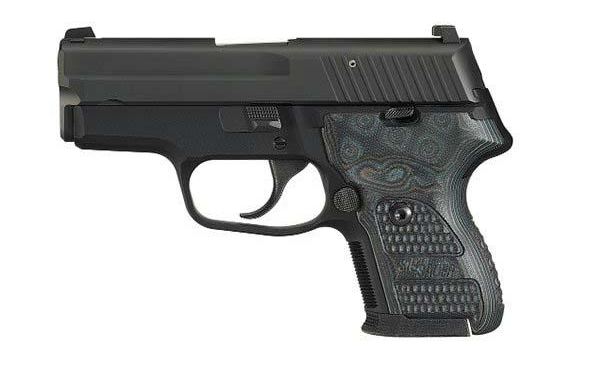
SIG Sauer introduced the P224 in its lineup of SIG pocket pistols in early 2012. Based on the P229, the P224 takes the same hammer-fire reliability and lightweight all-metal frame and puts them in a subcompact package with all the familiar SIG controls and functions.
Despite its small size, the P224 maintains a double-stack magazine for a capacity of 12 rounds of 9mm and 11 rounds of .40 S&W or .357 SIG. Newer-model P229 magazines can also be used for an even greater round count.
Full-size SIGLITE night sights allow the P224 to deliver pinpoint accuracy, which can be a challenge in most subcompacts. SIG has several P224s in the works that alter the finishes and grips, and the SAS (SIG Anti-Snag) model has a de-horned slide and frame for optimum concealed carry.
P232
The P232 is a small, lightweight pistol chambered in .380 ACP. It features a fixed-barrel blowback action with a proven design that balances well. Its smooth contours and snag-free edges make it ideal for personal protection. It’s the pistol’s small size that makes it easy to carry concealed, whether in a discreet holster, purse or on the ankle, and yet the outstanding ergonomics of the grip design allow for comfortable shooting even in large hands.
The trigger comes from the factory with a 5.5-pound single-action pull and is capable of both single-action and double-action. Pulling back the slide sets the hammer backward and downwards to its single-action position, making for a very short and crisp trigger pull with minimal take-up. The double-action pull is longer and more stiff, but still very smooth. It has no external safeties, though it does have a decocking lever.
The lever provides a safe method of lowering the hammer from its full-cocked, single-action position, to a half-cocked, double-action safe position where the hammer itself falls forward to a locking point about an eighth of an inch from the rear of the firing pin.
The P232 weighs less than 19 ounces empty, and its single-stack magazine gives the grip a trim profile, making it a pleasure to carry throughout the day. Its overall length is 6.6 inches. The trigger pull for a first double-action shot 10 pounds, while the single-action let-off is 4.4 pounds.
P238
Revealed in 2009, the P238 is a single-action pistol that hails back to the Colt Mustang pistol, with a classic SIG Sauer scalloped slide and finger relief under the triggerguard. Grip panels are fluted polymer, making this an all-metal-frame firearm in competition with plastic-framed pistols in the same class as the Ruger LCP and the Kel-Tec P-3AT.
The P238 comes in 15 versions, so it should be easy to find one to fit your tastes. One even comes fitted with a laser aiming device. The P238 weighs less than 16 ounces. Its all-metal frame features an anodized alloy beavertail-style frame with fluted grips for comfort and a secure hold. Furthermore, the stainless steel slide features SIG slide serrations and improves overall performance. Additionally, the SIGLITE night sights are removable and adjustable for windage.
P229 Elite .40 DA/SA Pistol
SIG SAUER’s new P229 Elite with its excellent Short Reset Trigger (SRT) system was introduced on a select number of their DA/SA pistols at the 2007 SHOT Show.
All in all, SIG has something for everyone. No matter which of these SIG pocket pistols you choose to fit your shooting needs, SIG Sauer has a wide enough selection of models and variants to fit the most discriminating of tastes. For more information on SIG pocket pistols, visit sigsauer.com











